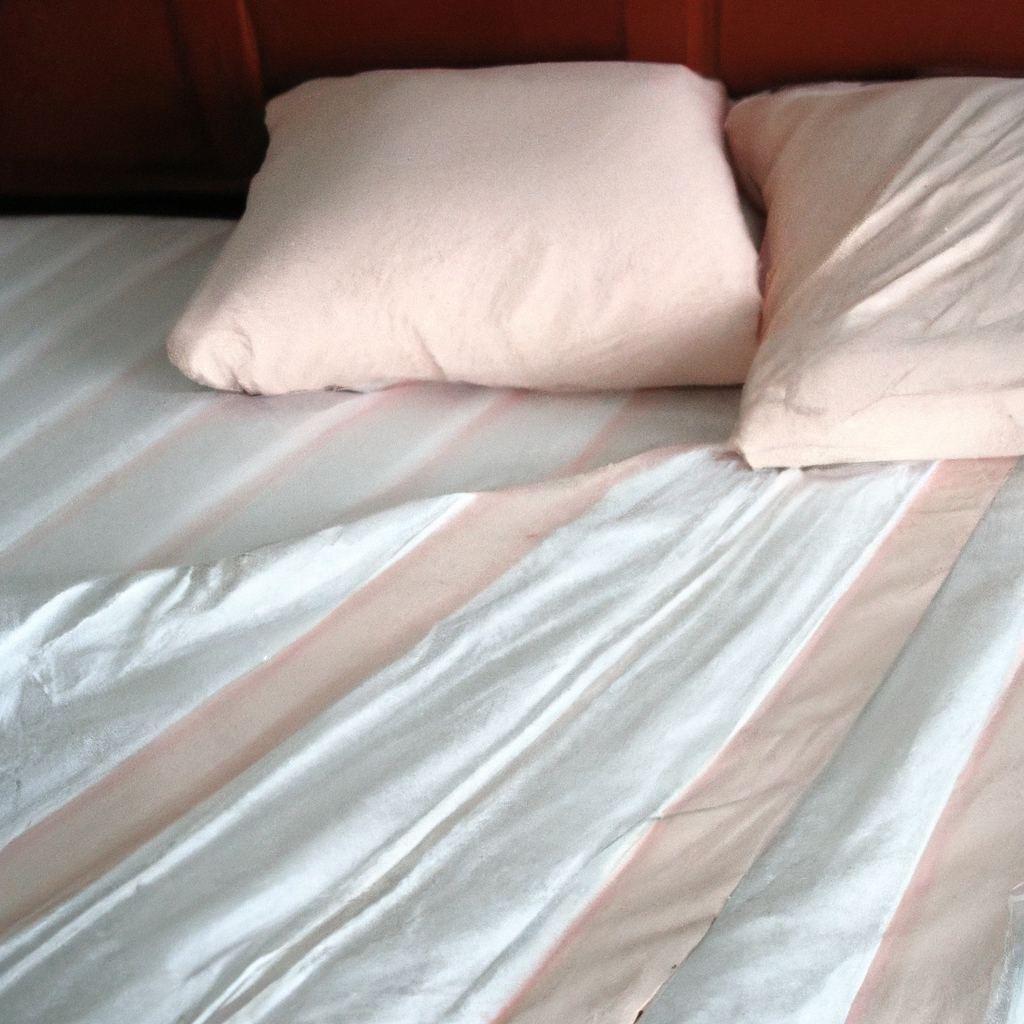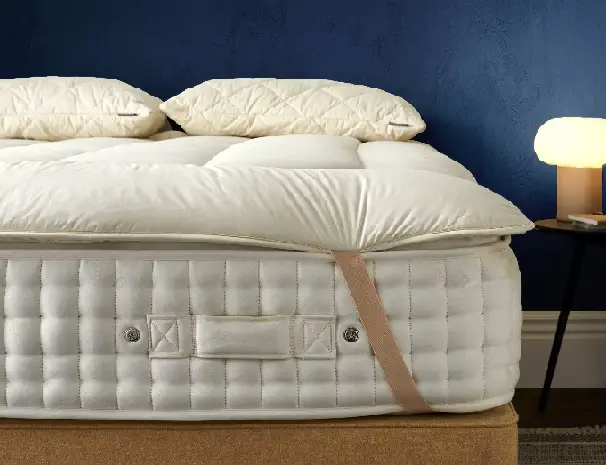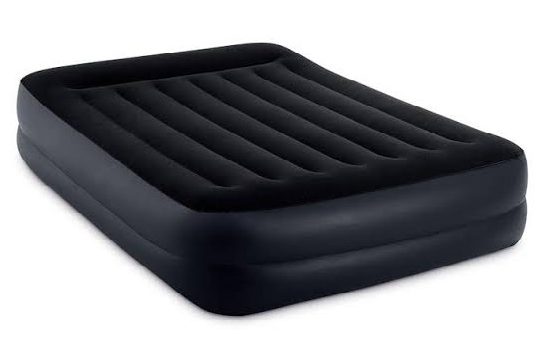Imagine this: you’ve just arrived at a luxurious hotel, ready to relax and unwind after a long day of traveling. As you settle into your cozy room, the last thing you want to think about is the possibility of bed bugs lurking in the shadows. But fear not, because in this article, we will reveal some simple yet effective tips to help you ensure a peaceful slumber. Learn how to spot these pesky critters and take control of your hotel room, so you can sleep peacefully and worry-free.
Table of Contents
1. Check the Bed
When entering your hotel room, the first thing you should do is check the bed thoroughly. Bed bugs are notorious for hiding in mattresses and bedding, so it’s crucial to inspect every part of the bed to ensure a peaceful sleep.
1.1 Remove the bedding
Start by stripping off the bedding, including the sheets, pillowcases, and blankets. By removing the layers, you can get a clearer view of any signs of bed bugs that may be lurking beneath.
1.2 Inspect the mattress seams
Carefully examine the seams of the mattress, as bed bugs tend to hide in the folds and crevices. Look for any small, brownish-red insects or tiny black spots, which could indicate the presence of bed bugs or their droppings.
1.3 Examine the box spring
Don’t forget to check the box spring thoroughly. Bed bugs often seek refuge in the box spring, as it provides them with ample hiding spots. Inspect the seams and corners for any signs of bed bug activity.
1.4 Check under the bed
Take a peek under the bed to ensure there are no signs of bed bugs. Shine a flashlight in the dark corners to spot any bugs or their droppings. Bed bugs may also leave behind shed skins or small eggs, so be on the lookout for these as well.
1.5 Look for blood stains or droppings
One telltale sign of a bed bug infestation is the presence of blood stains or dark spots on the bedding. Bed bugs feed on human blood and can leave behind small blood smears or spots. Additionally, check for tiny black dots, which are bed bug droppings.
2. Inspect the Furniture
Apart from the bed, it’s crucial to inspect all the furniture in your hotel room. Bed bugs can hide in various places, so a thorough examination is essential for peace of mind.
2.1 Check the headboard
Start by inspecting the headboard. Bed bugs often hide in the cracks and crevices of headboards, as they are close to where people sleep. Look closely for any signs of bed bugs, such as small insects, dark spots, or tiny eggs.
2.2 Examine the bedside tables
Bedside tables are another favorite hiding spot for bed bugs. Take some time to inspect the corners, drawers, and edges of the tables. Look out for any signs of bed bug activity, including live bugs, droppings, or blood stains.
2.3 Inspect the chairs or couches
If your hotel room includes chairs or couches, give them a thorough examination. Bed bugs can easily hide in the seams and cushions of upholstered furniture. Check for any signs of infestation, such as insects, dark spots, or eggs.
2.4 Look inside the drawers
Open the drawers of any furniture in the room and inspect the interiors carefully. Bed bugs may seek refuge in these dark spaces. Pay close attention to the corners, edges, and joints, as these areas are often favored by bed bugs.
2.5 Pay attention to upholstered furniture
Upholstered furniture, such as sofas or armchairs, can be a haven for bed bugs. Take a close look at the seams, cracks, and crevices of the upholstery. Make sure you check for any signs of infestation before settling in.

3. Examine the Walls and Floors
Although bed bugs are primarily associated with beds and furniture, they can also hide in the walls and floors of your hotel room. Be diligent in inspecting these areas to ensure a bed bug-free environment.
3.1 Inspect the walls near the bed
Start by examining the walls near the bed. Bed bugs may be hiding in the cracks or crevices along the baseboards. Use a flashlight to thoroughly inspect the area, paying attention to any signs of bed bugs, such as live bugs, droppings, or molted skins.
3.2 Check the wallpaper or paint
If your hotel room has wallpaper or painted walls, inspect them closely for any signs of bed bug activity. Look for small black dots, blood stains, or even bed bugs themselves. Remember to check behind any wall art or decorations as well.
3.3 Look for cracks or crevices
Bed bugs can squeeze into the smallest of spaces. Inspect any cracks or crevices in the walls, as they may serve as hiding spots for these pests. Use a flashlight to illuminate these areas and search for signs of bed bugs.
3.4 Examine the carpets or rugs
Carpets and rugs can provide ideal hiding places for bed bugs. Get down on your hands and knees to inspect the carpet closely, paying attention to the edges and corners. Look for any signs of bed bug activity, such as live bugs, dark spots, or eggs.
3.5 Search for signs of bed bugs in electrical outlets
While it may seem unlikely, bed bugs can even hide in electrical outlets. Carefully inspect the outlets, using a flashlight to get a better view. Look for any signs of bed bugs, such as live bugs, droppings, or eggs.
4. Check the Luggage Rack and Closet
To ensure a bed bug-free stay, it’s important to inspect the luggage rack and closet in your hotel room. Bed bugs can easily hitch a ride on your belongings, so being meticulous in these areas is crucial.
4.1 Inspect the luggage rack
Before placing your luggage on the rack, thoroughly inspect it for any signs of bed bugs. Pay close attention to the corners, seams, and joints, as bed bugs can often hide in these areas. Look for live bugs, dark spots, or eggs.
4.2 Examine the closet
The closet is another area where bed bugs tend to lurk. Take a few minutes to inspect the closet thoroughly. Look for any signs of bed bugs, such as live bugs, droppings, or blood stains. Pay close attention to the corners and seams of the closet.
4.3 Look for signs of bed bugs on hangers
Bed bugs can crawl onto hangers and hide in the folds of clothing. Take a close look at the hangers in the closet, inspecting them for any signs of bed bugs. If you spot anything suspicious, it’s best to find an alternative way to store your clothing.
4.4 Check the floor of the closet
Don’t forget to inspect the floor of the closet as well. Bed bugs can crawl onto the floor and hide in the corners or along the baseboards. Use a flashlight to search for any signs of bed bug activity, such as live bugs or droppings.
4.5 Pay attention to any items left on the luggage rack
If there are any items left on the luggage rack by previous guests, be cautious. Bed bugs can easily hide in bags, purses, or clothing. Inspect any items left on the luggage rack before placing your belongings nearby.
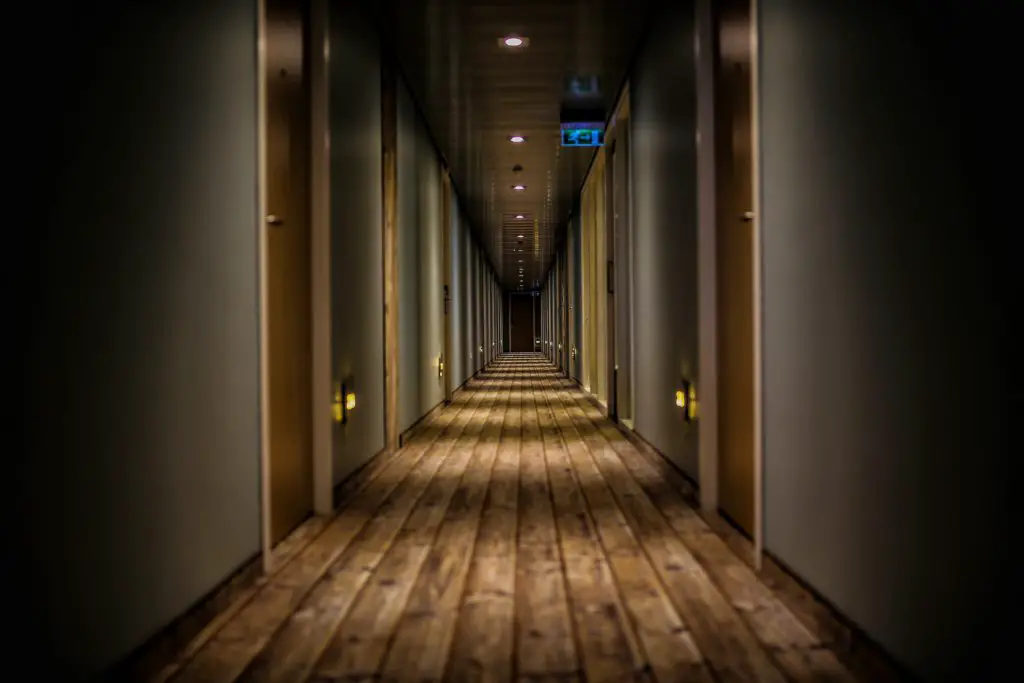
5. Inspect the Bathroom
Although bed bugs are less likely to infest bathrooms, it’s still important to inspect this area thoroughly. By doing so, you can have peace of mind and ensure a completely bed bug-free stay.
5.1 Check the towels
Start by inspecting the towels in the bathroom. While bed bugs are unlikely to be hiding in towels, it’s still worth giving them a quick check. Look for any signs of bed bug activity, such as dark spots or shed skins.
5.2 Inspect the shower curtain
Take a few moments to examine the shower curtain for any signs of bed bugs. Look for dark spots or small eggs that may indicate bed bug activity. While rare, bed bugs can sometimes hide in the folds or corners of shower curtains.
5.3 Examine the bathroom tiles
Inspect the bathroom tiles carefully, paying attention to the grout lines. Although bed bugs are unlikely to be hiding in the tiles, it’s a good practice to thoroughly check every area of the hotel room. Look for any signs of bed bugs, such as live bugs, droppings, or eggs.
5.4 Look for signs of bed bugs in the bathroom vanity
The bathroom vanity can provide hiding spots for bed bugs, especially if it has cracks or crevices. Inspect the vanity closely, using a flashlight if necessary. Look for any signs of bed bugs, such as live bugs, droppings, or blood stains.
5.5 Pay attention to any cracks or crevices in the bathroom
Even though bed bugs are less common in bathrooms, they can still find their way into cracks or crevices. Take a moment to inspect any gaps, corners, or edges in the bathroom. Check for any signs of bed bug activity, such as live bugs, droppings, or eggs.
6. Use a Flashlight
A small flashlight can be your best friend when inspecting your hotel room for bed bugs. By using a flashlight, you can illuminate the darker corners and crevices, making it easier to spot any signs of infestation.
6.1 Bring a small flashlight
Before your trip, make sure to pack a small flashlight. It doesn’t need to be anything fancy; a simple handheld flashlight will do. By having a flashlight on hand, you can easily inspect hidden areas for any signs of bed bugs.
6.2 Shine the light on the mattress seams
When inspecting the bed, shine the flashlight directly on the seams of the mattress. Bed bugs often hide in these folds and crevices, making them a prime spot for inspection. Look for any signs of bed bugs, such as live bugs, droppings, or eggs.
6.3 Inspect the headboard with the flashlight
Use the flashlight to thoroughly inspect the headboard for any signs of bed bug activity. Shine the light on all the cracks, crevices, and seams, as these areas are most likely to harbor bed bugs. Look for any signs of infestation, such as live bugs or dark spots.
6.4 Check under furniture using the flashlight
With the help of your flashlight, check under any furniture in the room. Bed bugs can easily hide in the dark corners or crevices beneath chairs, tables, or couches. Take your time to thoroughly inspect these areas, looking for any signs of bed bug activity.
6.5 Use the flashlight to examine cracks or crevices
Throughout your inspection, use the flashlight to examine any cracks or crevices in the walls, floors, or furniture. Bed bugs can easily hide in these small spaces, so it’s important to shine a light on them to detect any signs of infestation.

7. Use a Luggage Stand
To minimize the risk of encountering bed bugs in your hotel room, it’s advisable to use a luggage stand or rack rather than placing your luggage on the floor or bed.
7.1 Avoid placing luggage on the floor
Placing your luggage on the floor increases the chances of bed bugs crawling onto your belongings. It’s best to avoid direct contact with the floor, especially in hotel rooms where bed bugs may be present.
7.2 Use a luggage stand or rack
Instead of placing your luggage on the floor, use a luggage stand or rack provided by the hotel. These elevated surfaces serve as a barrier between your belongings and any potential bed bug activity.
7.3 Keep luggage away from the bed and furniture
When using a luggage stand, ensure it’s placed away from the bed and furniture in the room. Keeping your luggage away from these areas reduces the chances of bed bugs hitching a ride on your belongings.
7.4 Keep belongings organized on the luggage stand
Make sure to keep your belongings organized and contained on the luggage stand. Avoid leaving items scattered or hanging off the sides, as this makes it easier for bed bugs to hide or crawl into your luggage.
7.5 Inspect the luggage stand for signs of bed bugs
Before placing your luggage on the stand, give it a quick inspection. Check for any signs of bed bug activity, such as live bugs, droppings, or blood stains. If you notice anything suspicious, request a different stand or find an alternative solution.
8. Use Protective Encasements
To provide an additional layer of protection against bed bugs, consider using bed bug-proof encasements for your mattress, box spring, pillows, and cushions.
8.1 Consider using bed bug-proof encasements
Investing in bed bug-proof encasements can be a proactive measure to safeguard your sleep. These specialized encasements are designed to prevent bed bugs from infesting your mattress, box spring, and pillows.
8.2 Encase the mattress and box spring
Once you’ve inspected the mattress and box spring, consider encasing them in bed bug-proof encasements. These encasements create a protective barrier, preventing bed bugs from accessing these areas.
8.3 Use encasements for pillows and cushions
Don’t forget to encase your pillows and cushions as well. Bed bugs can easily hide in these soft and comfortable locations. By using encasements, you can provide an extra layer of protection for a peaceful night’s sleep.
8.4 Seal any cracks or crevices with caulk
Before encasing the mattress and box spring, take the time to seal any cracks or crevices in the bed frame or nearby furniture. Use a caulk specifically designed for bed bug prevention to eliminate any potential hiding spots.
8.5 Regularly inspect and maintain the encasements
Even with encasements in place, it’s important to regularly inspect and maintain them. Check for any signs of wear or tears and replace them if necessary. By properly maintaining the encasements, you can ensure they remain effective in protecting against bed bugs.
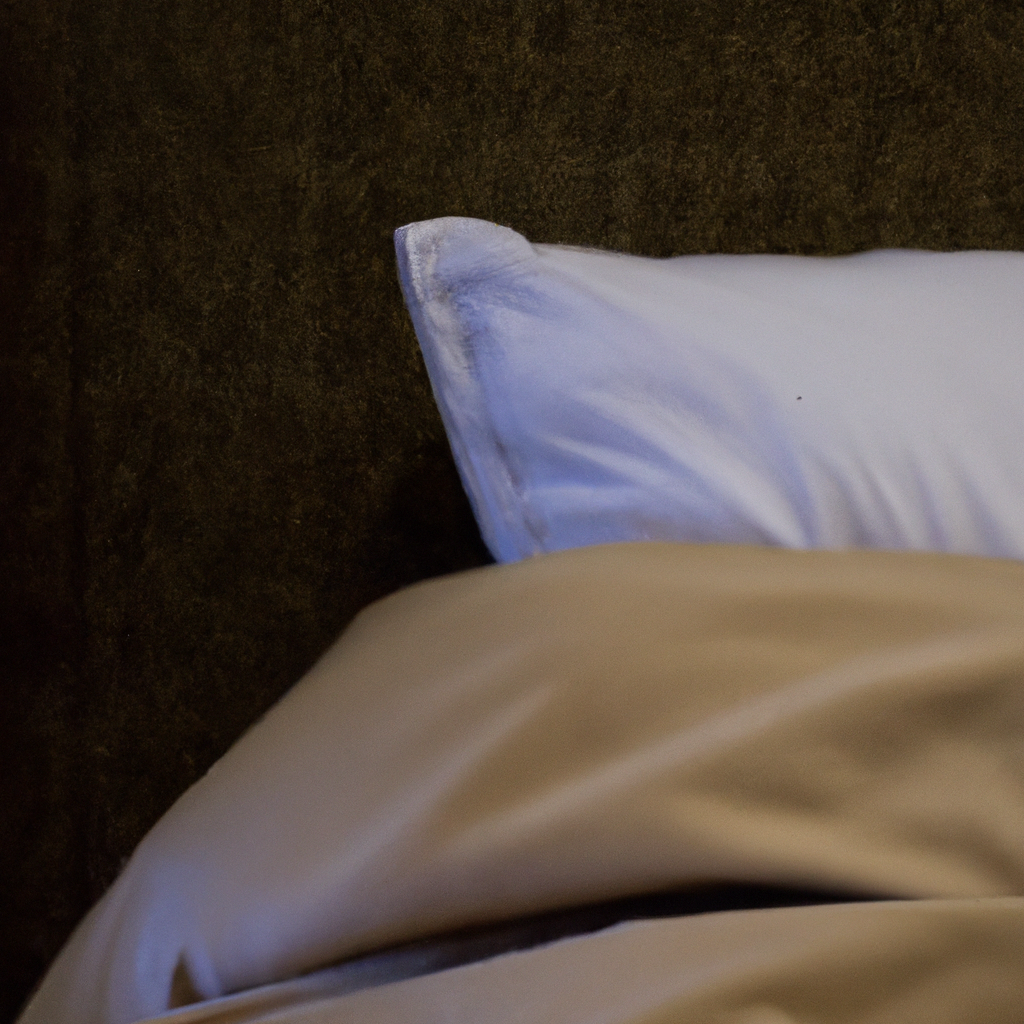
9. Be Cautious with Personal Items
To prevent bed bugs from hitching a ride on your belongings, it’s important to be cautious with your personal items throughout your stay.
9.1 Keep personal items off the bed
To minimize the risk of bed bugs infesting your personal items, avoid placing them directly on the bed. Instead, keep your belongings on elevated surfaces, such as a luggage stand or dresser.
9.2 Hang clothing or store in sealed plastic bags
If you’re staying in a bed bug-prone area, it’s a good practice to hang your clothing or store them in sealed plastic bags. This makes it more difficult for bed bugs to crawl into your clothing, reducing the risk of bringing them back home with you.
9.3 Avoid placing items on upholstered furniture
While it may be tempting to place your belongings on a comfortable chair or couch, it’s best to avoid doing so. Upholstered furniture can harbor bed bugs, and placing your items on them increases the chances of unwanted hitchhikers.
9.4 Inspect bags and belongings before leaving
Before leaving your hotel room, take a few minutes to inspect your bags and belongings. Look for any signs of bed bug activity, such as live bugs, droppings, or blood stains. Being vigilant can help prevent bringing bed bugs back home with you.
9.5 Wash and dry clothing on high heat after a trip
Once you’ve returned from your trip, it’s a good practice to wash and dry your clothing on high heat. Bed bugs are unable to survive in high temperatures, so washing and drying your clothes thoroughly can help eliminate any potential hitchhikers.
10. Report any Concerns
If you encounter any signs of bed bugs or are concerned about the cleanliness of your hotel room, it’s important to report your concerns to the hotel staff.
10.1 Inform the hotel staff
The moment you notice any signs of bed bugs or have concerns about the cleanliness of your hotel room, notify the hotel staff immediately. They should be made aware of the issue to rectify the situation promptly.
10.2 Provide specific details and evidence
When reporting your concerns, provide the hotel staff with specific details and any evidence you have gathered. This may include photographs, descriptions of bed bug sightings, or any other relevant information.
10.3 Request for a different room or accommodation
If you discover bed bugs in your hotel room, it’s essential to request a different room or alternative accommodation. The hotel staff should make an effort to relocate you to a bed bug-free environment.
10.4 Follow up with the appropriate health authorities
In severe cases where you experience bites, allergic reactions, or significant discomfort due to a bed bug infestation, it’s advisable to follow up with the appropriate health authorities. They can provide guidance and support in such situations.
10.5 Leave a review to warn others about your experience
To help fellow travelers make informed decisions, consider leaving a review of your experience. Share your concerns about the presence of bed bugs or any cleanliness issues you encountered during your stay. Your review can help prevent others from experiencing similar difficulties.
